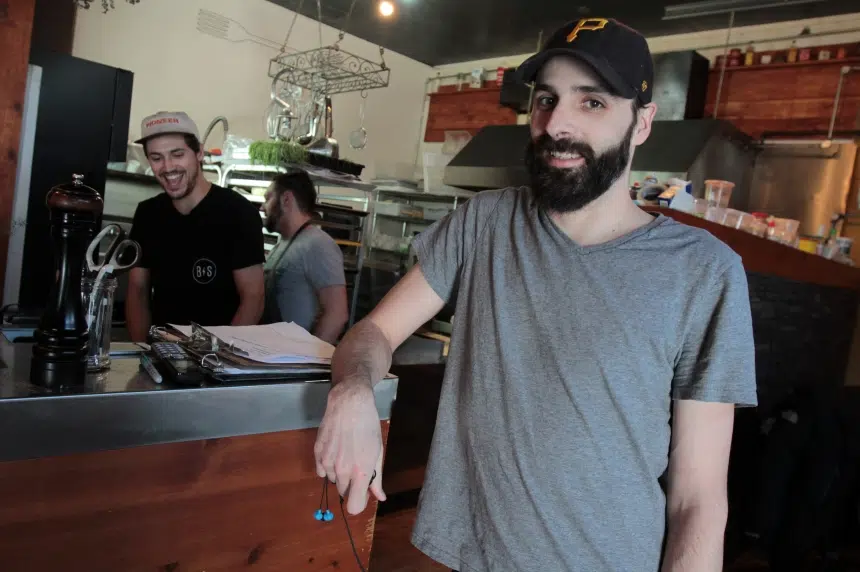Restaurant owners who source their food from around the province are reaping the benefits of buying local as the Canadian dollar continues to slip.
The loonie has hovered around 70 cents U.S., but economists are projecting it could fall as low as 59 cents before it starts to climb again. The result is higher business for Canadian exporters, but higher prices for imports like produce.
Several restaurants across Saskatoon say the impact of the Canadian dollar on their business has been minimal thanks to their business strategy to get most of their food from local producers.
“By seeing the food system the way it is, and seeing fuel prices (and) how high they are and how much money it takes to transport food across the globe, we knew we didn’t want to be a part of that system,” The Hollows and Primal Pasta owner Christie Peters said. “Because of the structure we’ve created for ourselves, we’ve kind of opted out of that system.”
Peters said they grow or locally source up to 90 per cent of their produce year-round. They also can and preserve foods for winter and leaner times.
The strategy has allowed them to nearly completely avoid importing American goods aside from a few items such as chocolate, olive oil, salt and coffee.
Peters said going local has a higher storage cost and keeping a horticulturalist on the payroll isn’t cheap either, but they’ve seen their model “pay itself off time and time again”.
Prairie Harvest Cafe chef and owner Michael McKeown tries to buy nearly entirely local.
“The price is locked in and the growing season has already happened so you kind of know what your supply available to you is,” he said.
But without a storage room, he has to look elsewhere for 20 per cent of his produce in the winter. He said lettuce, celery, and tomatoes are among the produce that have seen at least a 20 per cent jump in price.
“We’ve definitely noticed the prices (of imported food) going up substantially,” he said.
McKeown said they evaluate the menu on a regular basis and find ways to keep food local and prices down. He said he regularly visits the farmers market and he’s also considered starting his own garden.
“You just have to think what’s absolutely necessary to make the food taste good and build around that,” he said.
As shoppers continue to pay more for produce, Peters hopes they support the local growers and locally sources restaurants as well.
“As long as people have money to still go out and eat, we’ll be here to feed them.”











